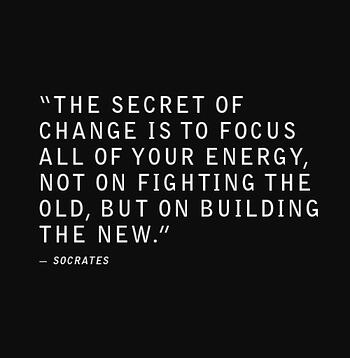 Next week I’m speaking to a CEO Group in Wisconsin. The leader of the group sent me the question that he’s going to open the meeting with, asking me if I would be interested in giving my answer to the group. Not only did I say that I would; since I got the email I haven’t been able to think about much of anything else.
Next week I’m speaking to a CEO Group in Wisconsin. The leader of the group sent me the question that he’s going to open the meeting with, asking me if I would be interested in giving my answer to the group. Not only did I say that I would; since I got the email I haven’t been able to think about much of anything else.
The question was: What significant changes have you seen in your profession over the years?
The answer came to mind immediately. The very nature of how customers buy has completely transformed from how things worked when I started my sales career in 1989. It’s now trite to talk about how the buyer has all of the power now. Yet 20, or even 15 years ago salespeople used to laugh at how customers thought they had control.
This change is forcing businesses across the board to rethink they very nature of how they develop and grow their business. As my dad used to share with me when I would complain how things were changing too fast, you can either fight the trend and be harmed by it, or jump on the trend and enjoy the rewards.
The change is dramatically impacting your organization’s win rate. It is taking more time and resources to close sales, margins are getting tighter and tighter, and the profitably of growth is getting strained.
There are three attributes of this trend that every growth-oriented executive and salesperson needs to be aware of and manage if their goal is to sustain profitable growth.
1. The very nature of how organizations assess problems, vet solutions and buy has radically changed.
Google’s research into the Zero Moment-of-Truth confirms how your prospects and customers use the Internet as their primary source of information and knowledge. Their research highlights that, on average, a prospect must touch 10.4 pieces of content before engaging in conversation with a selling organization.
Additionally, research from the Sales Executive Council and Forrester Research highlight that prospects do 2/3rds or more of their analysis before engaging in conversation with a selling organization.
I’ve always said that the definition of a great selling organization is one that can initiate the sale when there is nothing to buy. This research confirms that this is no longer a philosophy, but a ticket to entry.
If your goal is sustained, predictable and profitable growth you must create the tools and content that allow prospects and customers to engage with your company without talking to anyone. Websites filled with your “we-do’s” are not enough.
2. The decision-making process undertaken by customers has radically changed.
The days of “entering high” and convincing a “decision-maker” that your solution was the best are over. Decisions today are consensus driven. Your value proposition and sales strategy must address multiple levels of the organization.
You can no longer survive by being an expert in your solution. You must become an expert in your customer’s problems at multiple levels within their organization.
This means your content and sales approach must work with a senior executive as well as a front-line manager. The failure to connect with multiple levels will either cost you the opportunity for a sale, or throw you into a commoditizing procurement process.
3. The very nature of what makes an effective salesperson has radically changed.
The days of hiring a gregarious individual, who shakes hands, brings coffee and provides tickets to the local ballgame, sitting back and letting the sales come in are over. Today, effective B2B salespeople are business savvy, and challenge their customers.
As The Challenger Study highlighted, they teach, tailor and control the conversation. They dig deep, uncover hidden problems and opportunities, and continually create value for their customers and prospects. The like-me approach to selling is simply killing your win rate.
It’s not enough to merely tell your salespeople that they need to “challenge the customer.” Today, you must build a fully aligned system geared to key markets and issues. Building such a system will provide a competitive advantage that will not only enable your win rate to surge; it will also lower the cost of growth.
If identifying the strategies to manage these trends is high on your priority list, make sure you join me on April 15, at 2pm EDT as I share the secrets to doubling your win rate in our next free webinar.

 Doug Davidoff
Doug Davidoff